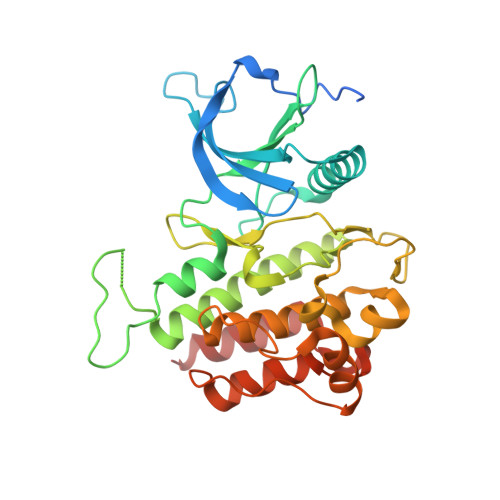Structural Mimicry of A-Loop Tyrosine Phosphorylation by a Pathogenic FGF Receptor 3 Mutation.
Huang, Z., Chen, H., Blais, S., Neubert, T.A., Li, X., Mohammadi, M.(2013) Structure 21: 1889-1896
- PubMed: 23972473
- DOI: https://doi.org/10.1016/j.str.2013.07.017
- Primary Citation of Related Structures:
4K33 - PubMed Abstract:
The K650E gain-of-function mutation in the tyrosine kinase domain of FGF receptor 3 (FGFR3) causes Thanatophoric Dysplasia type II, a neonatal lethal congenital dwarfism syndrome, and when acquired somatically, it contributes to carcinogenesis. In this report, we determine the crystal structure of the FGFR3 kinase domain harboring this pathogenic mutation and show that the mutation introduces a network of intramolecular hydrogen bonds to stabilize the active-state conformation. In the crystal, the mutant FGFR3 kinases are caught in the act of trans-phosphorylation on a kinase insert autophosphorylation site, emphasizing the fact that the K650E mutation circumvents the requirement for A-loop tyrosine phosphorylation in kinase activation. Analysis of this trans-phosphorylation complex sheds light onto the determinants of tyrosine trans-phosphorylation specificity. We propose that the targeted inhibition of this pathogenic FGFR3 kinase may be achievable by small molecule kinase inhibitors that selectively bind the active-state conformation of FGFR3 kinase.
- School of Pharmacy, Wenzhou Medical University, Wenzhou, Zhejiang 325035, China.
Organizational Affiliation:


















